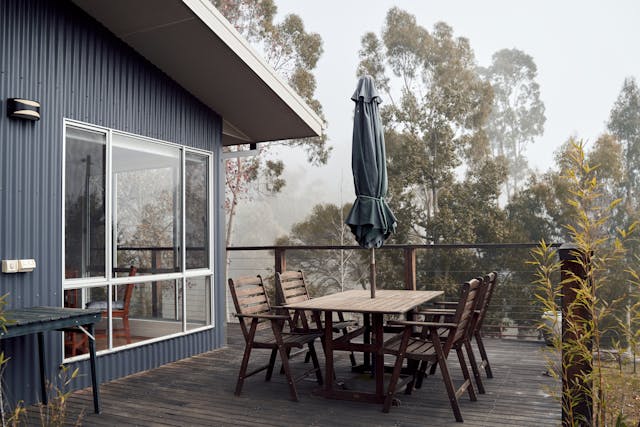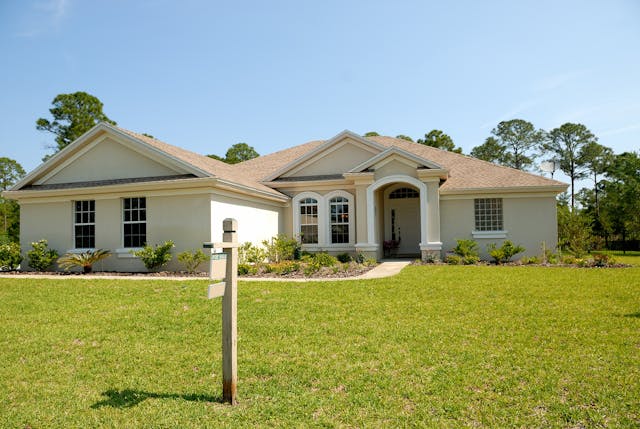
- Create a comprehensive budget that includes all costs and a buffer for unexpected expenses for informed project decisions.
- Invest in quality materials and skilled labor for long-term benefits and project success.
- Phase large-scale projects to manage budgets, weather, and other factors for efficient upgrades.
- Prioritize upgrades strategically in each phase to enhance your home’s performance and aesthetics.
- Research and collaborate with professionals for a thoughtful approach to sustainably transform your home’s exterior.
Your home’s exterior is the face it presents to the world, the first thing visitors and potential buyers will notice. It’s also the primary defense against the elements. With this dual importance, upgrading your home’s exterior is a significant investment that should not be taken lightly. For homeowners looking to enhance their dwellings, multiple factors must be weighed and balanced to ensure the investment is visually appealing but also practical and durable. Here’s a comprehensive guide on what you should consider before kicking off any exterior home improvement project.
Materials and Durability
Choosing the Right Materials
Materials are the backbone of your home’s durability and aesthetic appeal. Selecting the right ones is perhaps the most crucial decision you’ll make. Siding, roofing, and outdoor fixtures come in various materials, each with advantages and disadvantages.
Regarding durability, opt for materials with a proven track record of withstanding the elements in your area, whether high humidity, strong winds, or extreme temperature ranges. For instance, fire-resistant materials like steel or fiber cement may be preferred in areas prone to wildfires.
Weather Considerations
Your local climate can be harsh or mild, but it will always imprint on your home’s exterior. In areas with heavy snowfall, you may consider a steeper pitch for your roof to prevent buildup. Materials that can withstand salt corrosion, like certain hardwood or metal, are advisable in coastal regions.
Extreme weather can also mean more frequent maintenance or replacement of certain materials. Plan your upgrades for the immediate aesthetic effect and long-term value under the harshest conditions.
Aesthetics and Design
Coordinating with Your Home’s Style
A seamless exterior upgrade should enhance your home’s existing architectural style. A modern home might be complemented by sleek metal cladding, while a more traditional dwelling could benefit from the warmth of cedar shake shingles.
Harmonizing your neighborhood’s overall aesthetic can improve the property’s resale value and community integration. Doing so ensures that your home stands out for the right reasons.
Color Schemes and Landscaping
Strategically choosing exterior color schemes can add depth and character to your home. Lighter colors can make a smaller home look more expansive, while deeper tones create a more dramatic presence.
Landscaping, especially in well-kept gardens and appropriate yard layout, can significantly contribute to curb appeal. It can soften the lines of your home, creating an inviting and eye-catching blend.
Functionality and Energy Efficiency
Enhancing Outdoor Living Spaces

Outdoor living spaces are being used more and more, not just for relaxation but also for entertainment. A well-planned deck or patio extension can significantly increase the living space of your home.
Add features like built-in seating, shade structures, or outdoor kitchens to maximize expansion. These should be not only durable but also designed to complement your home.
Improving Energy Efficiency
An often overlooked but critical aspect of any exterior upgrade is its impact on your home’s energy efficiency. Upgrading to energy-efficient windows and doors and proper insulation can lead to substantial savings on your utility bills. Reflective roofing materials can also reduce the heat absorbed into your home, especially in warmer climates.
Sustainable materials and construction techniques are becoming more popular, and they can contribute not only to energy savings but also to a reduction in your home’s environmental footprint.
Professional Services and Installation
The Role of Professionals in Upgrading Your Exterior
While there are some exterior upgrades that a seasoned homeowner can tackle on their own, certain projects demand the expertise of professionals. Structural changes or installations that require permits, like a new roof or a home addition, should always be left to the experts.
Professional services ensure that the work is not only done to a high standard but also compliant with local building codes, which is crucial for the safety and value of your home. For example, hiring residential roofing contractors instead of attempting to replace your roof can save you time, money, and potential headaches in the long run.
Additionally, professional installers can access specialized tools and materials that may not be available to the average homeowner. This can significantly improve the quality and longevity of your exterior upgrades.
Obtaining Permits and Following Local Regulations
Before beginning any significant upgrades, understanding your area’s permit requirements is essential. This is a legal necessity and a way to ensure that your upgrades are being conducted in line with local standards and with respect to your neighbors.
Navigating the permitting process can seem daunting, but it’s necessary. Working with a contractor experienced in your area can help streamline this upgrade aspect.
Budgeting and Planning

Estimating Costs and Setting a Budget
Home improvement costs can quickly add up, so developing a realistic project budget is crucial. Research the average materials and labor costs in your area, and be sure to include a buffer for unforeseen expenses.
An accurate budget will help you make informed decisions regarding the scope of your project. Remember that quality materials and skilled labor are worth the investment in the long run.
Planning and Phasing Your Project
Large-scale exterior upgrades, like a comprehensive landscape redesign or a full replacement of your siding, may need to be phased over time to accommodate your budget, weather patterns, or other extenuating circumstances.
When phasing a project, consider the critical path of construction to ensure that each phase builds upon the last and sets the stage for the next. This is an opportunity to prioritize upgrades and make strategic choices that can improve the efficiency of your project and your home’s performance.
Conclusion
Upgrading your home’s exterior is an exciting venture that requires thorough consideration and planning. Considering the factors discussed in this guide, you can ensure that your project will succeed, providing a durable, aesthetically pleasing, and valuable addition to your home. Remember, each decision you make can impact your home for years. Take the time to research materials, plan out aesthetic and functional needs, and work with professionals when necessary. With a thoughtful approach, your home’s exterior can be transformed into a space you can enjoy and be proud of for many years.

